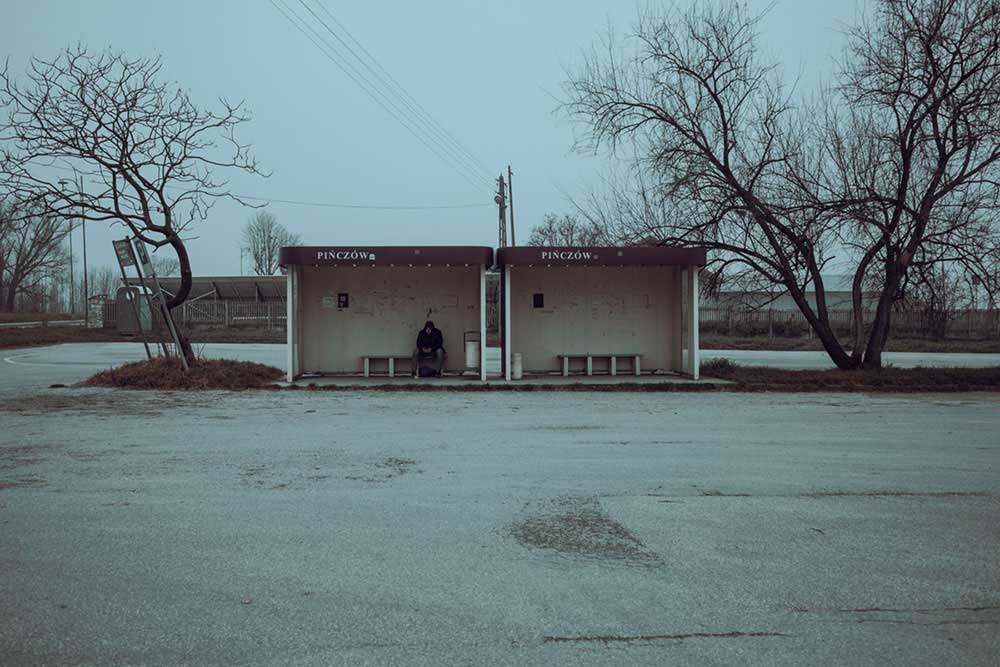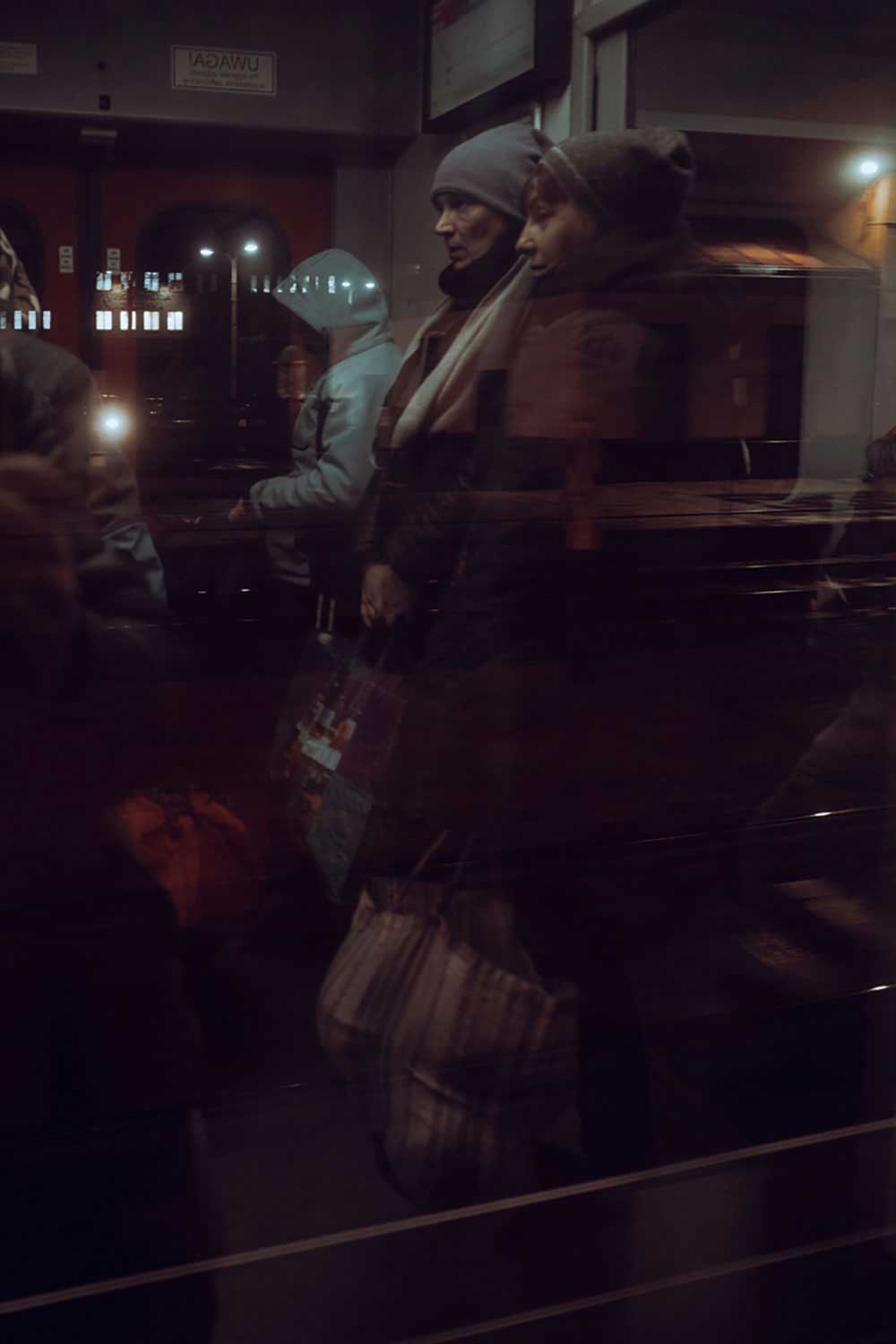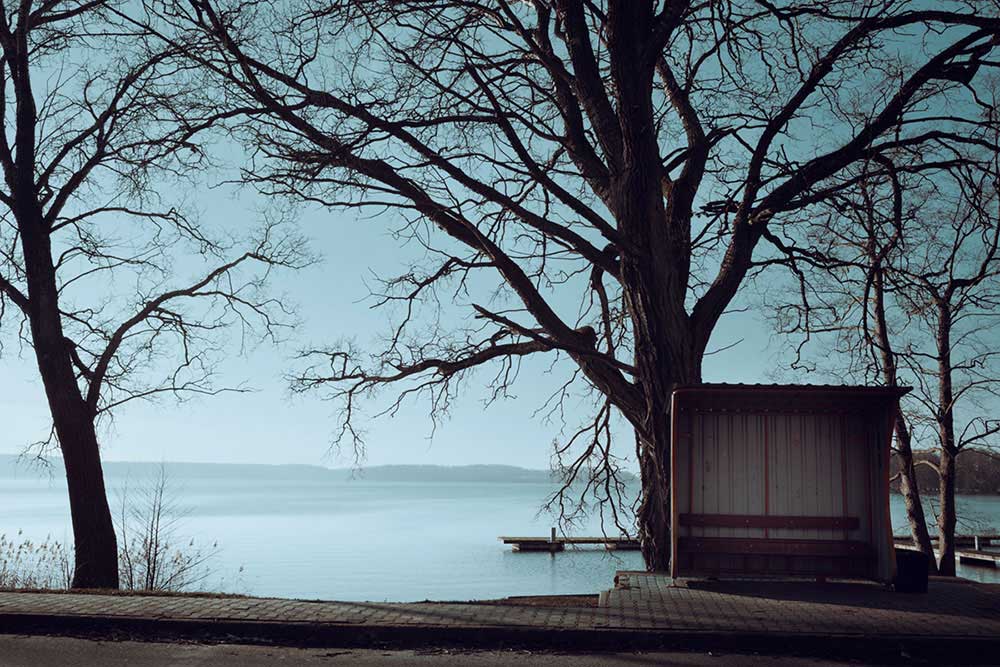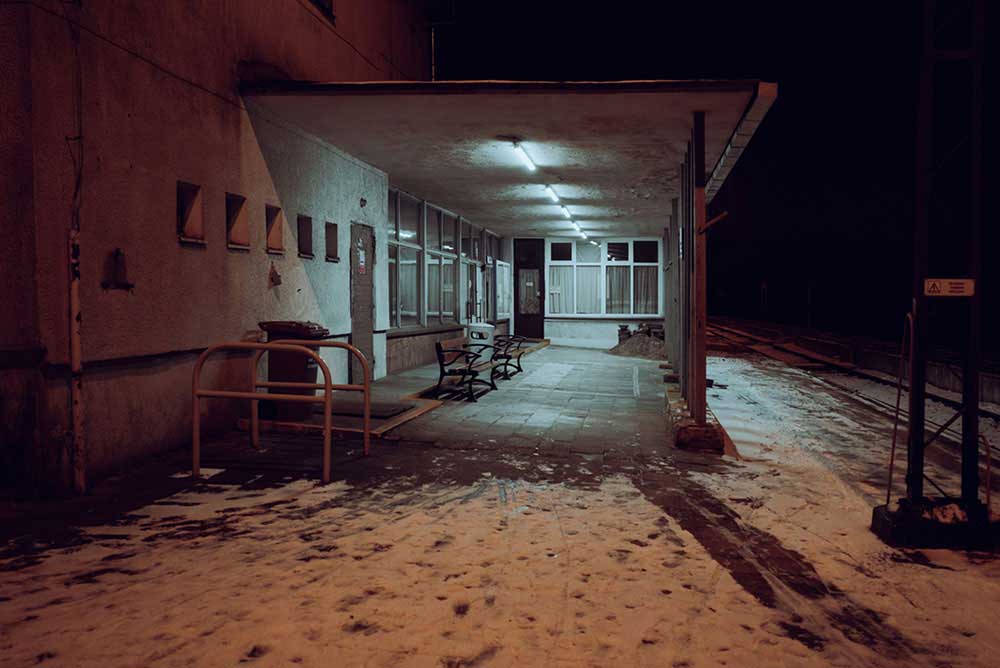The Long-lasting Transition State are photographs that were created out of the need to record the “sign” of temporality that appears during my travels.
All photos, taken in 100 places in Poland, in one year. However, there will be no “big six” cities here. The choice of places outside large agglomerations was dictated by the fact that this is the only way to show how people with a low social status travel. Province where I traveled only by public transport, shows how people who do not own cars and live in small towns move from place to place and how difficult it can be. The spaces that appear in the photos are stations, shelters, bus stops and inconspicuous places, sometimes not noticed in the tissue, departure points for buses. The time of the pandemic additionally changed their status. Some of them have been excluded from public use, forgotten due to a significant reduction in the number of courses, or their status has been changed. Deafly closed, they did not return to their original usefulness for a moment or a few weeks. Some new or renewed ones become only shells of the original function assigned to them.




















About Wojciech Karliński
Wojciech Karliński is polish photographer. He cooperate with the biggest publishing houses in the country. His photos apears on covers of the bestsellers books. He is intresting in social reportage, culure and lanscape. [Official Website]






